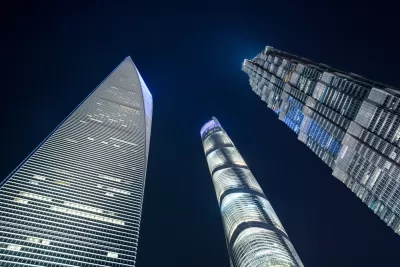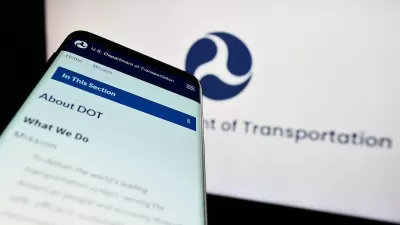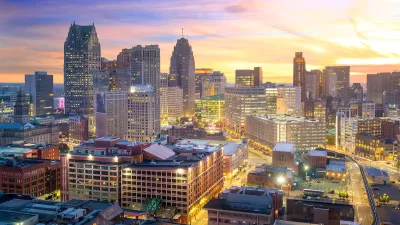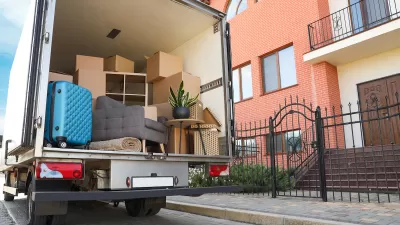Vertical cities could be much more than monolithic luxury towers, but the idea has its skeptics.

The current global population is around 7.6 billion, and experts expect it to grow to 9.8 billion in 2050 and 11.2 billion in 2100. This rapidly expanding population is stressing the earth's natural resources and changing its climate. It brings up questions of how all these people will be able to access adequate food, water, housing, and medical care.
Expanding cities horizontally to make room for all these new people would destroy more natural resources, so a growing number of people are proposing vertical cities as a solution to this dilemma.
Vertical cities take the idea of skyscrapers and expand on it. A vertical city, according to a nonprofit promoting the concept, is an "arrangement of interconnected mega towers" that could support hundreds of thousands of people. These buildings could be as tall as 400 floors and contain housing, stores, hospitals, schools, farms, and outdoor spaces, all in one building or series of connected structures.
Architects would design these towers with sustainability in mind, and could even make them entirely self-sustaining.
The Benefits
What would be the benefits of a vertical city? As populations expand, we need to find ways to house people without destroying what's left of our natural environment.
Building upward instead of outward enables us to host vast amounts of people in a small footprint, while conserving land and natural resources. We could then use the land for food production, recreation or natural resources, or leave it as a natural area.
Vertical cities could also have other environmental benefits. Having numerous services and amenities in these megatowers would reduce the need for driving, reducing emissions associated with cars and saving residents money.
These buildings could also save energy and even generate their own electricity. These towers would have a multitude of surfaces where people could install solar panels, and their height and size makes them ideal for wind turbines. The new Shanghai Tower, one of the world's tallest buildings, has already implemented this idea and has 270 wind turbines built into its facade.
These buildings may also foster social connectedness by making it easier for individuals to socialize in common areas and visit friends. To do so, they would not even have to leave the building, although of course, they could if they wanted to.
The Downsides
Not everyone is enthusiastic about the idea of vertical cities, though. Some feel these buildings would create more problems than they would solve.
One argument is that they would make cities less livable because people would have little reason to leave the towers, reducing the amount of time people spend on the streets of the city. The buildings could also disrupt the skyline and interfere with the feel and culture of historic neighborhoods.
Some worry people might also begin to feel claustrophobic in these towers because they would spend too little time outdoors, which is unhealthy.
One potential remedy to this is integrating outdoor spaces into the towers, such as gardens, pools and other areas on balconies and rooftops. Their design could also let in large amounts of natural light. Additionally, residents could leave anytime and spend time in the natural areas building the towers helped preserve.
Another concern has to do with the safety aspects of these mega-structures. Their architects would have to design these buildings to withstand earthquakes, as a collapse would be disastrous. Fighting fires that might break out in the buildings would also be a challenge, and they would have to incorporate adequate fire escape routes.
Safety would need to be an integral part of every stage of planning and constructing a vertical city. Even things like the temperature outside while pouring concrete would need to come under scrutiny, since pouring it in hot weather can cause cracks and areas of weakness. As a building increases in height, safety concerns magnify, making every little detail that much more important.
Are Vertical Cities Feasible?
Right now, we have some very tall buildings, but nothing nearly as ambitious as a vertical city. Architects have come up with some theoretical designs, though. Italian firm Luca Curci Architects, for example, created an idea for a 180-floor vertical city that could support up to 25,000 people.
The building would be zero-impact, include plenty of green spaces and let in natural light and air. It would be in the water and accessible via boat, helicopter or a semi-submerged bridge.
For now, it is a concept—one that looks increasingly appealing as populations continue to grow and our planet's resources become more stressed.
Building vertical cities would take extensive amounts of research and planning, but they could help solve some of humankind's biggest challenges, so the effort may be worthwhile.

Manufactured Crisis: Losing the Nation’s Largest Source of Unsubsidized Affordable Housing
Manufactured housing communities have long been an affordable housing option for millions of people living in the U.S., but that affordability is disappearing rapidly. How did we get here?

Americans May Be Stuck — But Why?
Americans are moving a lot less than they once did, and that is a problem. While Yoni Applebaum, in his highly-publicized article Stuck, gets the reasons badly wrong, it's still important to ask: why are we moving so much less than before?

Using Old Oil and Gas Wells for Green Energy Storage
Penn State researchers have found that repurposing abandoned oil and gas wells for geothermal-assisted compressed-air energy storage can boost efficiency, reduce environmental risks, and support clean energy and job transitions.

Minneapolis Bans Rent-Setting Software
Four cities have enacted restrictions on algorithmic software that can inflate rent costs.

Oakland to Add 244 New EV Chargers
Oakland plans to launch its new charging network at eight locations by the end of 2025.

Jane Goodall Inspires with Message of Hope, Resilience, and Environmental Action
Speaking in Pasadena, Jane Goodall offered a hopeful and inspirational message, urging global compassion, environmental responsibility, and the power of individual action to shape a better future.
Urban Design for Planners 1: Software Tools
This six-course series explores essential urban design concepts using open source software and equips planners with the tools they need to participate fully in the urban design process.
Planning for Universal Design
Learn the tools for implementing Universal Design in planning regulations.
Heyer Gruel & Associates PA
City of Moreno Valley
Institute for Housing and Urban Development Studies (IHS)
City of Grandview
Harvard GSD Executive Education
Salt Lake City
NYU Wagner Graduate School of Public Service
City of Cambridge, Maryland






























